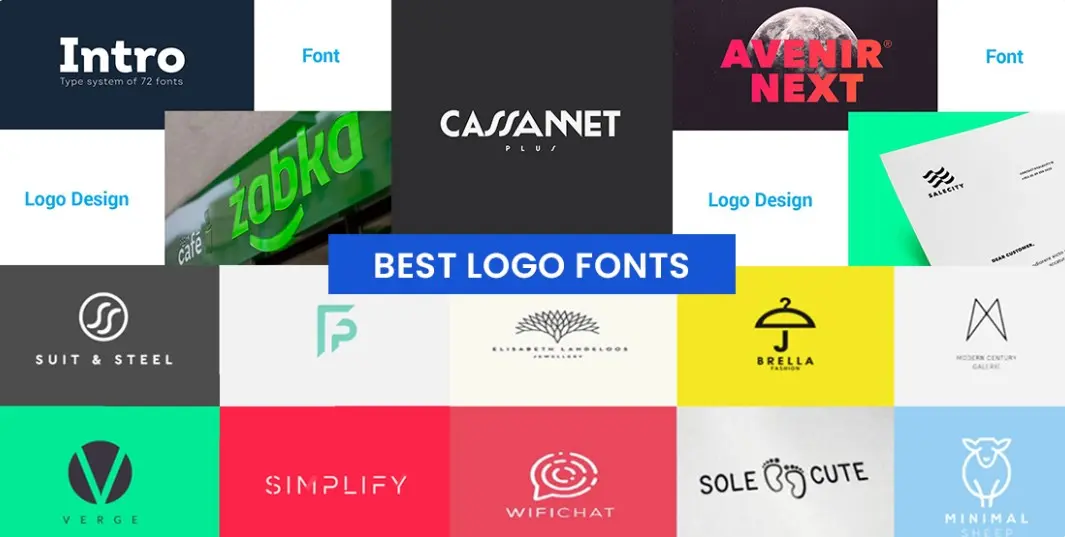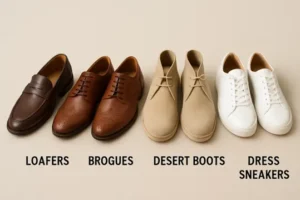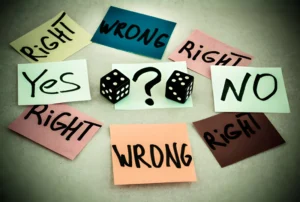Let’s be honest—how often do you think about fonts in your everyday life? Probably not that much. But they’re everywhere. From your morning coffee cup to the logo on your favorite sneakers, typography silently shapes the way we feel about brands.
Think about Coca-Cola. Think about Google. Think about Vogue. The fonts in these logos aren’t just letters—they’re statements. They tell a story. They build trust. And sometimes, they even spark emotion.
When it comes to logo design, typography isn’t just decoration—it’s strategy. The font you choose can say more than a paragraph ever could. So if you’re designing a logo—whether for your personal brand, your side hustle, or your company—it’s worth taking a moment to understand the power of typography.
Let’s dive in, shall we?
Why Fonts Matter More Than You Think
You could have the best brand idea in the world, but if your logo font is off, it sends the wrong message. Fonts are like facial expressions for your words. They set the tone instantly.
Imagine a law firm with a comic sans logo (yikes). Or a kid’s toy brand using a cold, industrial typeface. The disconnect is jarring. That’s the magic and the danger of typography—it communicates before people even read what it says.
In logo design, every curve, angle, and space matters. Is your brand serious or playful? Minimalist or expressive? Elegant or bold? The right font can capture that essence without saying a word.
The Three Main Font Styles (And What They Say About You)
There are hundreds of thousands of fonts out there, but they mostly fall into three big families: serif, sans-serif, and script. Let’s break them down:
1. Serif Fonts
These fonts have small “feet” or extensions at the ends of letters (think Times New Roman or Georgia). They’re classic, trustworthy, and professional. Perfect for brands in finance, law, education, or luxury—anywhere a sense of tradition and authority is key.
Example: Tiffany & Co. uses a serif font that feels timeless and upscale, matching the elegance of their jewelry.
2. Sans-Serif Fonts
Sans-serif literally means “without serif.” These fonts are clean, modern, and minimalist. They’re often used in tech, fashion, and startups—places where simplicity and forward-thinking matter.
Example: Google’s logo is a sans-serif font. Friendly, open, and modern—just like their brand.
3. Script Fonts
Script fonts mimic handwriting or calligraphy. They’re expressive, stylish, and often feminine or romantic. But use them with care—too much flourish can hurt readability, especially at small sizes.
Example: Coca-Cola’s iconic swirly script conveys warmth and nostalgia, perfectly capturing its classic vibe.
Knowing which font family suits your brand can immediately narrow your options and guide your visual identity in the right direction.
The Psychology Behind Fonts
Fonts do more than look nice—they evoke feelings.
- Bold fonts feel confident and strong. Use them if your brand has a loud, fearless personality.
- Thin or light fonts feel refined and delicate. Great for beauty or wellness brands.
- All-caps can feel assertive or even aggressive—but also authoritative, depending on the context.
- Lowercase logos often feel casual and approachable. Think of brands like facebook (yes, lowercase ‘f’).
Typography is subtle psychology. Your customers may not consciously notice your font choice, but their brains definitely do.
Tech Meets Typography: How Tools Are Changing the Game
The good news? You don’t need to be a trained graphic designer to choose a great font anymore.
With online tools, AI suggestions, and typography libraries, even beginners can experiment, iterate, and refine their logos. In fact, platforms that let you create logos online have made it easier than ever to visualize your brand identity in real time. You can test different font pairings, tweak spacing, adjust colors—all without expensive software or a degree in design.
This is especially empowering for small business owners, freelancers, or students launching their first project. The learning curve is lower. The possibilities? Still sky-high.
These tools also help solve one of the biggest typography mistakes: falling in love with a font that looks cool but doesn’t function. You can test legibility across sizes, screens, and backgrounds, making sure your logo still pops on a business card, website header, or Instagram profile.
Tips for Picking the Perfect Font for Your Logo
Now, let’s get practical. Here are some battle-tested tips to help you find the ideal font for your logo:
1. Start With Your Brand Personality
Ask yourself: If my brand were a person, how would it speak? Formal or casual? Fun or serious? That answer will point you toward the right font family.
2. Prioritize Readability
A beautiful font is useless if people can’t read it. Test your logo at different sizes and on various devices. If it loses clarity, it’s not the one.
3. Avoid Overused Fonts
Stay away from clichés like Papyrus or Comic Sans. They’ve been used to death and can make your brand feel amateurish.
4. Don’t Rely Solely on Trendy Fonts
Trends come and go. Your logo should last. Choose something timeless that aligns with your brand’s long-term goals.
5. Use Font Pairing Wisely
If your logo includes a tagline or subtitle, consider a secondary font. Just make sure it complements the main one—contrast is good, but cohesion is key.
6. Trust Your Gut, But Test with Others
Sometimes you just feel that a font is right. But before you lock it in, get a second opinion. What feels perfect to you might read differently to your audience.
Conclusion: Typography Is Branding in Disguise
Choosing a font for your logo might seem like a small detail—but it’s anything but. It’s the visual handshake your brand makes with the world. The mood-setter. The tone-definer. And, in many cases, the dealbreaker.
Thanks to powerful online tools and growing access to smart design platforms, you no longer need to rely solely on professionals to create something that feels authentic and impactful. You can experiment, play, refine—and ultimately, craft a logo that speaks your brand’s language.
So next time you see a logo that just feels right, take a closer look at the letters. Chances are, the font is doing more heavy lifting than you ever realized.
Typography isn’t just about what you see. It’s about what you feel. And that, right there, is the magic.
Also Read-What Employers Need to Know About Specialty Dental Coverage Add-ons








